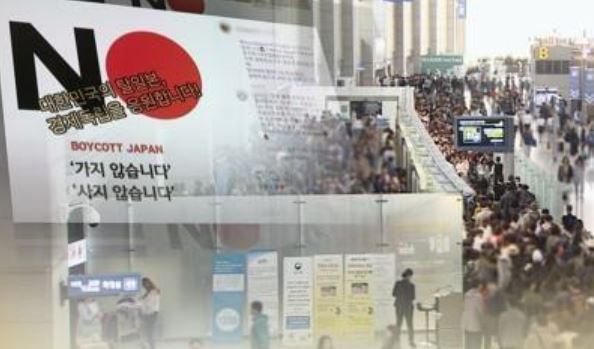The number of air passengers on routes between South Korea and Japan dipped during the peak summer vacation season amid an escalating bilateral trade spat, government data showed Wednesday.
The passenger load factor for flights to and from Japan averaged 71.5 percent during the first week of August, down from
84.5 percent from a year earlier, according to the data from the Ministry of Land, Infrastructure and Transport.
 |
(Yonhap) |
The average seat occupancy rate came to 75.7 percent for the last week of July, compared with 87.7 percent during the same period a year earlier.
The load factor has been on the decline since reaching 78.5 percent during the first week of July, when Japan imposed export curbs on South Korea.
The marked drops come as anti-Japan sentiment stemming from Tokyo's export restrictions on Seoul has dampened demand for travel to the neighboring country.
"The biggest factor is a boycott campaign against trips to Japan," an industry source said. "There has been a sharp downtrend in demand for individual travel."
In response, South Korean low-cost carriers have already cut flights or plan to streamline their routes between South Korea's regional cities to less popular Japanese cities.
Full-service carriers Korean Air Lines Co. and Asiana Airlines Inc. have also unveiled plans to suspend or reduce flights to some Japanese cities.
The "Boycott Japan" campaign started after Japan curbed exports of key materials to South Korea on July 4 in apparent retaliation over a spat surrounding wartime forced labor. Many Koreans were forced to work at Japanese factories and mines during Japan's 1910-45 colonial rule of the Korean Peninsula.
Earlier this month, Tokyo upped the stakes in the trade dispute by dropping South Korea as a trusted trading partner. In a tit-for-tat move, Seoul decided Monday to remove Japan from its list of preferred trading nations. (Yonhap)








